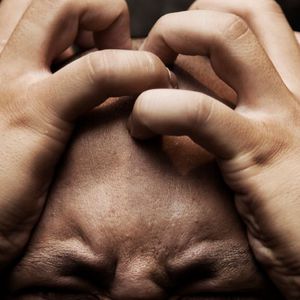Published on October 27, 2014 by Mark Borigini, M.D. in Overcoming Pain Earlier this month, the Centers for Disease Control and Prevention (the “CDC” to most of us) announced that the number of Americans dying from heroin overdoses doubled across 28 states during a two-year period ending in 2012, apparently the result of the rising rate of opioid addiction in this country—which in turn many believe is due to the easy access to prescription opioids. The CDC’s publication, “Morbidity and Mortality Weekly Report,” reported the data from a study that was a result of the agency’s effort to determine if reports from some states about alarming increases in heroin use and related deaths since 2010 were part of a larger nationwide trend. To accomplish this, the CDC invited state health departments to submit data on death rates, and focused on those related to heroin and opioid use. The major contributor to drug deaths was heroin use. This surprised many, but maybe many have just been reminded. After all, the public health establishment and the media have been focusing on overdoses of prescription pain-killers, which had indeed quadrupled from 1999 through 2010. In contrast, such events due to heroin, a drug that is in most cases more easily available on the street, so to speak, increased by less than 50 percent This increase in deaths from heroin overdose was not very discriminating, with alarming rises seen in all ages, all racial and ethnic groups and all regions of the country. Still, death due to prescription opioid overdose remains a larger problem: Opioid overdoses killed almost 10,000 Americans in 2012; whereas heroin deaths numbered a little over 3,600. And forget about all the publicity about marijuana being a pathway to more dangerous drug use: Depending on when a patient began abusing drugs, different answers were given when patients were asked if they abused heroin first, or prescription opioids first: In a sample of heroin users in treatment programs, 75 percent who started using heroin after 2000 said they first abused prescription opioids. “In contrast, among those who began use in the 1960s, more than 80 percent indicated that they initiated their abuse with heroin,” the study said. If heroin use increases, death from heroin increases (as does the spread of HIV and viral hepatitis). And we should all wonder what the crackdown on prescription opioid abuse is accomplishing. When do we start to crack down on addiction, and not prescription pads?
Earlier this month, the Centers for Disease Control and Prevention (the “CDC” to most of us) announced that the number of Americans dying from heroin overdoses doubled across 28 states during a two-year period ending in 2012, apparently the result of the rising rate of opioid addiction in this country—which in turn many believe is due to the easy access to prescription opioids. The CDC’s publication, “Morbidity and Mortality Weekly Report,” reported the data from a study that was a result of the agency’s effort to determine if reports from some states about alarming increases in heroin use and related deaths since 2010 were part of a larger nationwide trend. To accomplish this, the CDC invited state health departments to submit data on death rates, and focused on those related to heroin and opioid use. The major contributor to drug deaths was heroin use. This surprised many, but maybe many have just been reminded. After all, the public health establishment and the media have been focusing on overdoses of prescription pain-killers, which had indeed quadrupled from 1999 through 2010. In contrast, such events due to heroin, a drug that is in most cases more easily available on the street, so to speak, increased by less than 50 percent This increase in deaths from heroin overdose was not very discriminating, with alarming rises seen in all ages, all racial and ethnic groups and all regions of the country. Still, death due to prescription opioid overdose remains a larger problem: Opioid overdoses killed almost 10,000 Americans in 2012; whereas heroin deaths numbered a little over 3,600. And forget about all the publicity about marijuana being a pathway to more dangerous drug use: Depending on when a patient began abusing drugs, different answers were given when patients were asked if they abused heroin first, or prescription opioids first: In a sample of heroin users in treatment programs, 75 percent who started using heroin after 2000 said they first abused prescription opioids. “In contrast, among those who began use in the 1960s, more than 80 percent indicated that they initiated their abuse with heroin,” the study said. If heroin use increases, death from heroin increases (as does the spread of HIV and viral hepatitis). And we should all wonder what the crackdown on prescription opioid abuse is accomplishing. When do we start to crack down on addiction, and not prescription pads?
Damned If You Do, Dead If You Don’t




